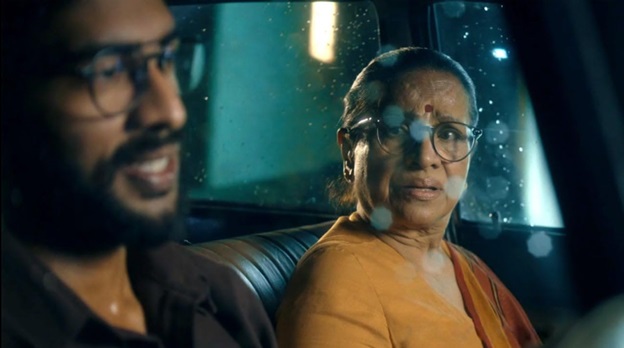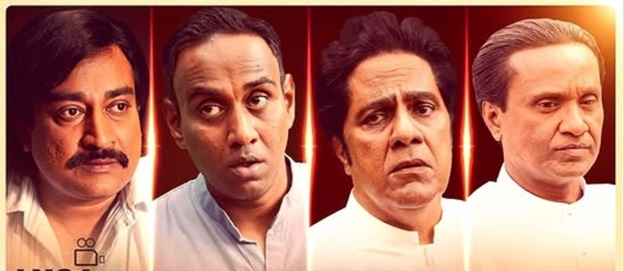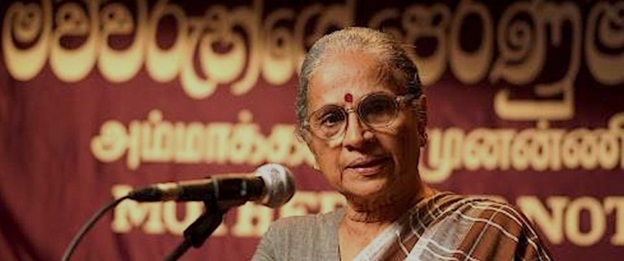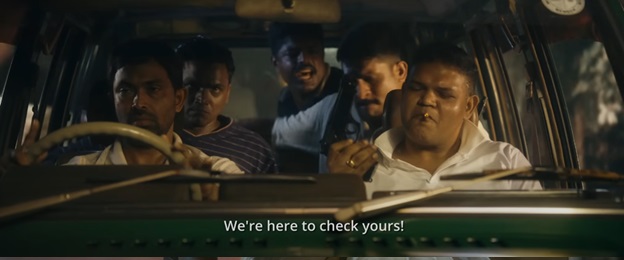Bringing Real Lives to Reel: A Closer Look at Rani (2025)
By Eng. Suran Fernando
In recent times, few Sri Lankan films have sparked as much discussion in society as Rani, a creation by the veteran film director, Asoka Handagama. The film has drawn attention from both viewers and critics, creating a wide range of strong opinions. For some, Rani is a triumph of Sri Lankan cinema, bold and brave. For others, it revives difficult memories from the late 1980s and early 1990s. Some feel the film does injustice to certain real-life public figures who are no more. Regardless of where one stands, Rani prompts reflection on how we remember the past, and how cinema can influence those memories.
The movie Rani is centered around Dr. Manorani Saravanamuththu and is based on the difficult events before and after the killing of her son, journalist and artiste Richard de Zoysa. It explores not only her personal and political struggle to seek justice, but also her inner emotions and conflicts as she faces the pain and pressure of a deeply troubled time.

Handagama describes Rani as fiction based on true incidents, though he carefully avoids calling it biographical fiction. Depicting real individuals, especially those still familiar to the public, is different from portraying mythical or historical characters. There’s a greater responsibility when representing people from recent history, as many still hold personal as well as emotional memories of them. On the other hand, audiences often don't approach such films neutrally, they obviously view them through the lens of their own lived experiences and political beliefs, which may lead them to question or reject the filmmaker's version of events. This made it especially challenging to portray both Manorani and Richard, along with several high-profile political figures from that era.

One of the main challenges filmmakers faces when creating biopic-style fiction is deciding how much creative freedom they can take in shaping up the plot. Handagama, who has often used his past films to explore bold controversial themes through characters of his own making, now applies a similar approach to well-known personalities like Dr. Manorani and journalist Richard de Zoysa. This shift raises important questions about where artistic freedom ends and responsibility begins when dealing with real people and sensitive histories.
It’s no surprise that the way Manorani is shown, frequently seen drinking and smoking, with references to her past, her reactions to controversial events, her arrogance, sharp language, her behavior at home has been questioned by those who knew her personally. Director Asoka Handagama has stated that the script was primarily developed based on the publicly available information found online, rather than inputs from her family and friends. This could explain why many who had intimate relationships with Manorani and Richard have expressed strong disagreement and displeasure, both in print and on social media, over the way her character has been represented. They argue that the film overemphasizes marginal negative traits while neglecting the well-known positive qualities she had. The director takes similar creative liberties with Richard’s portrayal too, shaping him to fit the story’s tone. Even Minister Athulathmudali is not spared from this treatment.
It seems that the director has selected a set of inner traits he’s always been interested in exploring, especially those with a controversial edge, and projected them onto the characters in Rani. In doing so, he brings his signature themes into a biopic-style film, blending his personal artistic preferences with the lives of real people. This approach become clear to those familiar with the key characters he created from his earlier fiction movies.

However, the typically bold Handagama has been noticeably careful with certain details in Rani. For instance, the name of the Mothers' Front is deliberately shown incorrectly as “Mothers’ Frnot” in English and “මවුවරුන්ගේ පෙරණුම” in Sinhala, in the backdrop of the stage where Manorani addresses mothers of the disappeared during that dark period. Although Dr. Manorani clearly stated in past television interviews which are still available online, that some of the men who came to abduct her son on 10th February 1990 were wearing official uniforms, the film deliberately avoids showing this, possibly to avoid unnecessary complications. In the final segment of the movie, which feels somewhat disconnected from the rest of the story, the film hints that Richard's murder was carried out by a group of drunken followers of a high-ranking official, attempting to impress their boss without receiving direct orders. This unexpected ending shifts the risky narrative into a safer direction, possibly allowing the filmmaker to avoid legal or political consequences.

The contrast in director’s approach, between portraying the lives of real people who are no longer alive and staging controversial political incidents that might still have ongoing relevance, becomes noticeable to an attentive viewer.
All in all, Handagama skillfully transforms the character of Manorani throughout the film. Initially, she is an elite specialist doctor, detached from the country’s political turmoil, living in a closed community with little awareness of the political struggles around her. However, she eventually emerges as a key figure in leading the mothers of the disappeared, playing a crucial role in triggering a government change. Her perspective on social issues evolves dramatically from the beginning to the end of the film.
During her transformation, Handagama exercises his creative license to an extent of incorporate his stage drama Maagatha (1989) in the film. He suggests the viewers that the dialogues from his own play marked a turning point, compelling Manorani to represent the mothers of the disappeared, a movement that eventually grew powerful enough to contribute to a change in government.

Asoka Handagama is known to be a fearless director who doesn’t try to avoid criticism, he actually welcomes it. He challenges common ways of thinking and always tries to send a strong message through his work. That has been his style from the beginning. This time, the only difference is that he uses a real-life story and real characters to do it. He knows that the local audience might get upset when women are shown drinking or smoking, when a mother and son talk about topics usually avoided in Sri Lankan families, or when real people's lives are shown in a way that feels uncomfortable. But the more people speak out against the film, the more attention it gets, and that kind of publicity is something Handagama, with all his experience, surely understands well.

Further, the film elegantly portrays the strategic efforts of Mangala Samaraweera and Mahinda Rajapaksa to bring her tactically into the political fold, convincing her to serve their agenda and indirectly using her rally the people against the ruling government. The film highlights how the public is deceived by the politicians, one after the other, manipulate their mentalities to get into the power. The sentiments of the house attendant, Karu reflect a segment of the public who readily accept common narratives about political heroes and enemies without question.
Asoka Handagama’s Rani offers a mix of truth, half-truths, and fiction, while revealing the director’s own inner voice. It pushes us to reflect on justice, politics, and the way we remember the past. Whether we agree with its take or not, the film leaves a lasting impression.
 Suran Fernando is a Chartered Building Services Engineer with over twenty years of experience in the field. He is a Council Member of the IESL, and currently serves as its Honorary Secretary. He also functions as the Editor of the IESL Newsletter, SLEN, and chairs the National Engineering Heritage Forum of IESL. In addition, he is a Council Member of the Engineering Council, Sri Lanka (ECSL). Suran is employed at SLIIT as the Director of Facilities Management.
Suran Fernando is a Chartered Building Services Engineer with over twenty years of experience in the field. He is a Council Member of the IESL, and currently serves as its Honorary Secretary. He also functions as the Editor of the IESL Newsletter, SLEN, and chairs the National Engineering Heritage Forum of IESL. In addition, he is a Council Member of the Engineering Council, Sri Lanka (ECSL). Suran is employed at SLIIT as the Director of Facilities Management.




